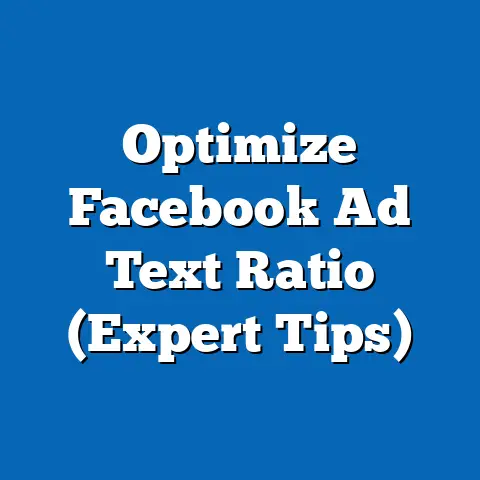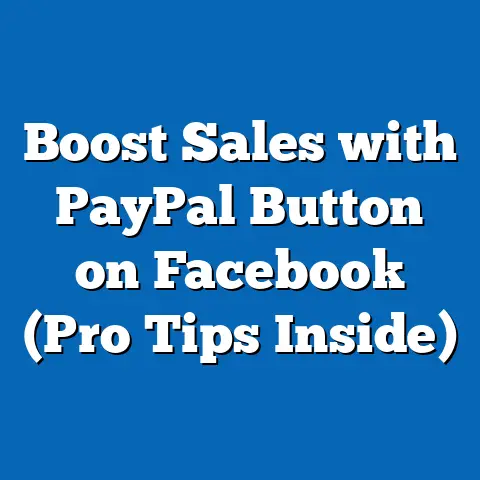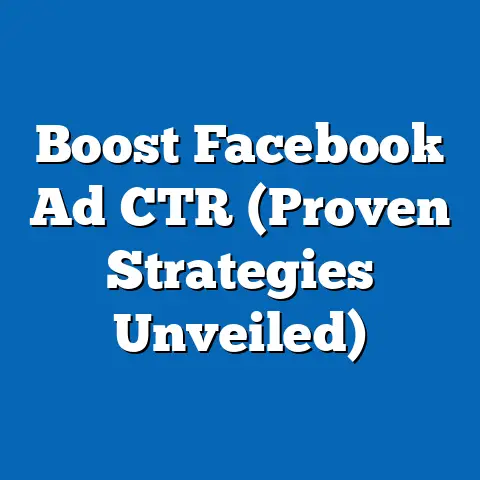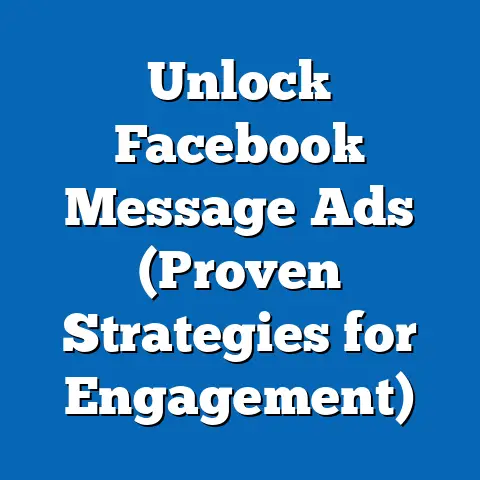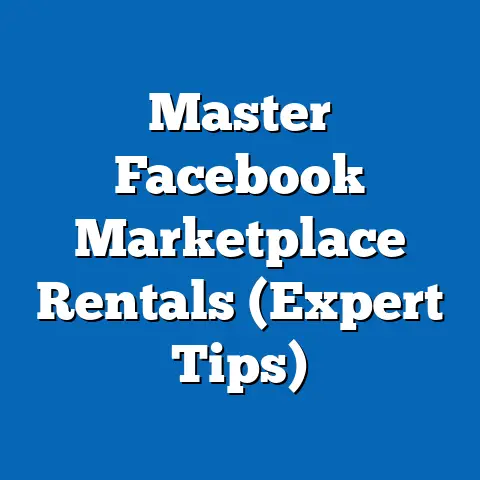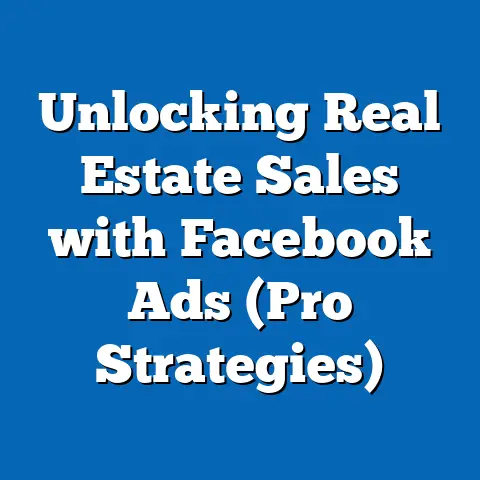Create Facebook Lead Ads (Unlock HubSpot Success Secrets)
In recent years, home renovation stories have captured the imagination of millions, reflecting a broader trend of homeowners investing in their spaces for comfort, functionality, and value. According to the Joint Center for Housing Studies at Harvard University, U.S. homeowners spent over $420 billion on home improvement projects in 2022, a 15% increase from 2020. This surge is driven by factors like remote work, rising home values, and a desire for personalized living environments.
Demographically, millennials (ages 25-44) are leading the charge, accounting for 35% of renovation spending as they purchase starter homes and customize them, per a 2023 report from HomeAdvisor. Meanwhile, baby boomers (ages 58-77) contribute 30%, often focusing on aging-in-place modifications. These trends highlight a diverse market ripe for targeted marketing strategies.
As renovation businesses—contractors, designers, and suppliers—seek to capitalize on this boom, digital tools like Facebook Lead Ads and platforms like HubSpot have become indispensable for capturing leads and driving conversions. This article explores how to create effective Facebook Lead Ads to unlock HubSpot success, weaving in data-driven insights, actionable strategies, and real-world applications for businesses in the renovation space and beyond.
Section 1: Understanding the Renovation Market Through Data
1.1 Key Statistics and Growth Trends
The home improvement industry has seen consistent growth over the past decade, with spending projected to reach $485 billion by 2025, according to Statista. A 2023 survey by Houzz revealed that 55% of homeowners planned renovations within the next year, up from 48% in 2020, signaling sustained demand post-pandemic. Kitchens (29%) and bathrooms (25%) remain the most popular projects, reflecting a focus on high-ROI upgrades.
Historically, renovation spending dipped during the 2008 recession to $290 billion but rebounded sharply by 2015 to $350 billion as economic confidence returned. Today’s numbers dwarf those figures, driven by inflation-adjusted costs and larger project scopes. The average cost of a mid-range kitchen remodel, for instance, rose from $56,000 in 2015 to $68,000 in 2023, per the National Association of Realtors.
1.2 Demographic Patterns in Renovation
Demographic data paints a nuanced picture of who’s renovating and why. Urban homeowners, who make up 40% of renovation spenders per HomeAdvisor, often prioritize space optimization, while suburbanites (45%) focus on outdoor upgrades like decks and patios. Income levels also play a role—households earning over $100,000 annually account for 60% of high-end projects, while those under $50,000 tend to stick to DIY or budget-friendly fixes.
Geographically, the South and West regions of the U.S. lead in renovation activity, comprising 52% of total spending due to population growth and housing demand, according to the U.S. Census Bureau. These insights are critical for businesses aiming to tailor their marketing efforts to specific audiences using tools like Facebook Lead Ads.
1.3 Why Digital Marketing Matters in This Space
With 78% of homeowners researching contractors and products online before starting projects (Houzz, 2023), digital presence is no longer optional. Social media platforms, especially Facebook, are go-to resources for inspiration and recommendations, with 65% of users aged 25-54 engaging with home improvement content weekly. This creates a fertile ground for targeted advertising to capture leads at the decision-making stage.
Section 2: The Power of Facebook Lead Ads for Lead Generation
2.1 What Are Facebook Lead Ads?
Facebook Lead Ads are a specialized ad format designed to collect user information directly within the platform, eliminating the need for external landing pages. Users can submit their name, email, phone number, or other details via a pre-filled form with just a few clicks. Introduced in 2015, this tool has become a game-changer for businesses seeking high-quality leads at lower costs.
According to Meta’s own data, Lead Ads reduce cost-per-lead by 20-30% compared to traditional link ads directing to websites. For renovation businesses, this means efficiently capturing contact details from homeowners actively seeking services.
2.2 Why Facebook Lead Ads Work for Renovation Businesses
Facebook’s user base of 3 billion monthly active users (Meta, Q3 2023) offers unparalleled reach, especially for targeting specific demographics like millennials or high-income households. The platform’s advanced targeting options—based on location, interests, and behaviors—allow businesses to zero in on homeowners who’ve recently moved (a key trigger for renovations) or follow home improvement pages.
A 2022 case study by Facebook showed that a home improvement company reduced its cost-per-lead by 42% using Lead Ads compared to standard ads. The instant form feature also boosts conversion rates, with completion rates averaging 10-15% higher than traditional forms, per Social Media Examiner.
2.3 Setting Up a Facebook Lead Ad: Step-by-Step
Creating a Facebook Lead Ad involves several key steps, each customizable to align with business goals:
- Choose Objective: Select “Lead Generation” as the campaign objective in Facebook Ads Manager.
- Define Audience: Use detailed targeting to reach homeowners in specific ZIP codes or those interested in “home improvement” or “interior design.”
- Design the Ad: Craft compelling visuals (e.g., before-and-after renovation photos) and copy (e.g., “Get a Free Kitchen Remodel Quote Today!”).
- Create the Form: Build a form with minimal fields—name, email, and phone—to maximize submissions. Add a privacy policy link for compliance.
- Set Budget and Schedule: Start with a daily budget of $20-50 to test performance, adjusting based on results.
Once live, these ads collect leads directly into a downloadable CSV file or integrate with CRM platforms like HubSpot for seamless follow-up.
Section 3: Integrating Facebook Lead Ads with HubSpot for Success
3.1 Why HubSpot Is the Perfect Partner for Lead Management
HubSpot, a leading CRM platform, offers tools to manage, nurture, and convert leads into customers. With over 194,000 customers worldwide as of 2023, HubSpot’s user base has grown 25% year-over-year, reflecting its effectiveness for businesses of all sizes. For renovation companies, it provides a centralized hub to track leads from initial contact to project completion.
HubSpot’s free tier includes basic CRM features, while paid plans (starting at $45/month) offer advanced automation and reporting. Its integration with Facebook Lead Ads allows automatic syncing of form submissions, saving time and reducing manual data entry errors.
3.2 How to Connect Facebook Lead Ads to HubSpot
Integrating the two platforms is straightforward and can be done in minutes:
- Access Facebook Ads Manager: Navigate to the “Lead Center” or “Integrations” tab.
- Select HubSpot: Choose HubSpot from the list of CRM partners and authenticate your account.
- Map Fields: Match form fields (e.g., name, email) from Facebook to corresponding fields in HubSpot.
- Test the Sync: Run a small ad campaign to ensure leads flow into HubSpot without issues.
Once connected, leads appear in HubSpot’s contact database, tagged with source details for easy segmentation. A 2023 HubSpot report found that businesses using such integrations saw a 38% increase in lead-to-customer conversion rates.
3.3 Leveraging HubSpot’s Tools for Lead Nurturing
HubSpot excels at turning raw leads into loyal clients through personalized follow-ups. Its email automation feature allows businesses to send targeted messages—like a discount on a consultation—based on lead behavior. Data shows automated emails have a 31% higher open rate than manual ones (HubSpot, 2023).
Additionally, HubSpot’s scoring system prioritizes “hot” leads based on engagement, ensuring sales teams focus on high-potential prospects. For example, a lead who downloads a renovation guide and visits pricing pages might score higher than a passive form-filler.
Section 4: Best Practices for Maximizing ROI with Facebook Lead Ads and HubSpot
4.1 Crafting High-Converting Ads
Success starts with ad design. Use vibrant images or videos—think stunning kitchen transformations—that grab attention within the first 3 seconds. Copy should address pain points, such as “Tired of an outdated bathroom? Get a free quote now!” Meta reports that ads with clear calls-to-action (CTAs) see 2.5x higher click-through rates.
Keep forms short; asking for more than 3-4 pieces of information can drop completion rates by 50%, per WordStream. Offer incentives like a free consultation or eBook on “Top 10 Renovation Tips” to boost submissions.
4.2 Segmenting and Targeting Audiences
Use Facebook’s Custom Audiences to retarget website visitors or past customers with tailored offers. Lookalike Audiences, based on existing leads, can expand reach to similar users, often yielding a 30% lower cost-per-lead (Meta, 2022). In HubSpot, segment leads by project interest (e.g., kitchen vs. outdoor) or budget range to personalize outreach.
For instance, a contractor in Texas might target homeowners within a 50-mile radius who’ve engaged with competitors’ pages, while using HubSpot to send region-specific content about local design trends.
4.3 Tracking Performance and Optimizing Campaigns
Both platforms offer robust analytics to measure success. Facebook Ads Manager provides metrics like cost-per-lead (CPL) and form completion rate, while HubSpot tracks email open rates and deal progression. A typical benchmark for renovation ads is a CPL of $10-20, though this varies by market and targeting precision.
Regularly A/B test ad elements—headlines, images, or form questions—to identify what resonates. A 2023 study by AdEspresso found that testing just two ad variants can improve conversion rates by 15-20%.
Section 5: Case Studies and Real-World Results
5.1 Case Study 1: Midwest Renovation Firm
A mid-sized contractor in Ohio used Facebook Lead Ads to target homeowners aged 30-55 within a 100-mile radius. Over 3 months in 2022, they generated 250 leads at a CPL of $12, compared to $25 via Google Ads. Integrating with HubSpot, they automated follow-up emails, converting 18% of leads into consultations—a 50% improvement over manual outreach.
Their success hinged on using before-and-after project photos and offering a free “Home Value Assessment” as a lead magnet. This visual storytelling, combined with streamlined CRM workflows, boosted their quarterly revenue by 22%.
5.2 Case Study 2: Coastal Design Studio
A California-based interior design firm focused on high-end clients, targeting households with incomes over $150,000. Using Facebook’s Lookalike Audiences and HubSpot’s lead scoring, they collected 180 leads in 60 days at a CPL of $18. Of these, 25% booked initial calls, with an average project value of $30,000.
Their strategy included personalized HubSpot email sequences showcasing luxury portfolio pieces, which increased engagement by 35%. This demonstrates the power of combining precise targeting with tailored nurturing.
Section 6: Challenges and Pitfalls to Avoid
6.1 Common Mistakes with Facebook Lead Ads
One frequent error is overly broad targeting, which inflates CPL and dilutes lead quality. A 2022 WordStream report found that campaigns without demographic or interest filters cost 28% more per lead. Another pitfall is neglecting mobile optimization—since 80% of Facebook users access the platform via mobile, forms and ads must load quickly and display cleanly.
Failing to follow up promptly also hurts results. HubSpot data shows that leads contacted within 5 minutes are 9x more likely to convert than those reached after 30 minutes.
6.2 Overcoming Integration Issues
Technical glitches, like mismatched form fields between Facebook and HubSpot, can disrupt lead flow. Regularly audit integrations and use HubSpot’s support resources to troubleshoot. Additionally, ensure compliance with data privacy laws like GDPR or CCPA by including consent checkboxes on forms—non-compliance can lead to fines or account suspensions.
Section 7: Data Visualization Description
To illustrate the impact of Facebook Lead Ads and HubSpot integration, imagine a dual-axis line chart titled “Lead Generation and Conversion Trends.” The x-axis represents a 12-month period (e.g., Jan-Dec 2023), while the left y-axis shows the number of leads generated (0-500) and the right y-axis shows conversion rate to consultation (0-25%).
One line, in blue, tracks monthly leads from Facebook Ads, peaking at 450 in June during a seasonal promotion. The second line, in green, shows conversion rates via HubSpot nurturing, rising from 10% in January to 22% by December as automation and personalization improve. This visual would highlight the correlation between lead volume and conversion efficiency, underscoring the value of integrated strategies.
Section 8: Broader Implications and Future Trends
The synergy of Facebook Lead Ads and HubSpot reflects a larger shift toward integrated, data-driven marketing. As consumer behavior evolves—71% of homeowners now expect personalized offers, per a 2023 McKinsey report—businesses must leverage tools that combine reach with relevance. For the renovation industry, this means meeting customers where they are (social media) and guiding them through tailored journeys (CRM).
Looking ahead, advancements like AI-powered ad targeting on Facebook and predictive analytics in HubSpot could further refine lead quality, potentially reducing CPL by 15-20% over the next 5 years, per industry forecasts. Privacy regulations will also shape strategies, pushing businesses to prioritize first-party data and transparent opt-ins.
Ultimately, mastering these tools isn’t just about capturing leads—it’s about building trust and delivering value in a competitive market. Renovation businesses, and others in service-driven sectors, stand to gain significant market share by adopting these technologies now, positioning themselves as leaders in a digital-first landscape.
Conclusion
The home renovation boom, fueled by $420 billion in annual U.S. spending and diverse demographic demand, presents a golden opportunity for businesses to grow through digital marketing. Facebook Lead Ads offer a cost-effective way to capture high-intent leads, while HubSpot transforms those leads into customers through automation and personalization. By following best practices—targeted ads, seamless integration, and data-driven optimization—companies can achieve measurable results, as seen in real-world case studies with up to 50% conversion improvements.
As the industry evolves, staying ahead means embracing these tools not just as tactics, but as core components of a customer-centric strategy. Whether you’re a contractor, designer, or supplier, unlocking HubSpot success through Facebook Lead Ads could be the key to sustained growth in 2024 and beyond.

